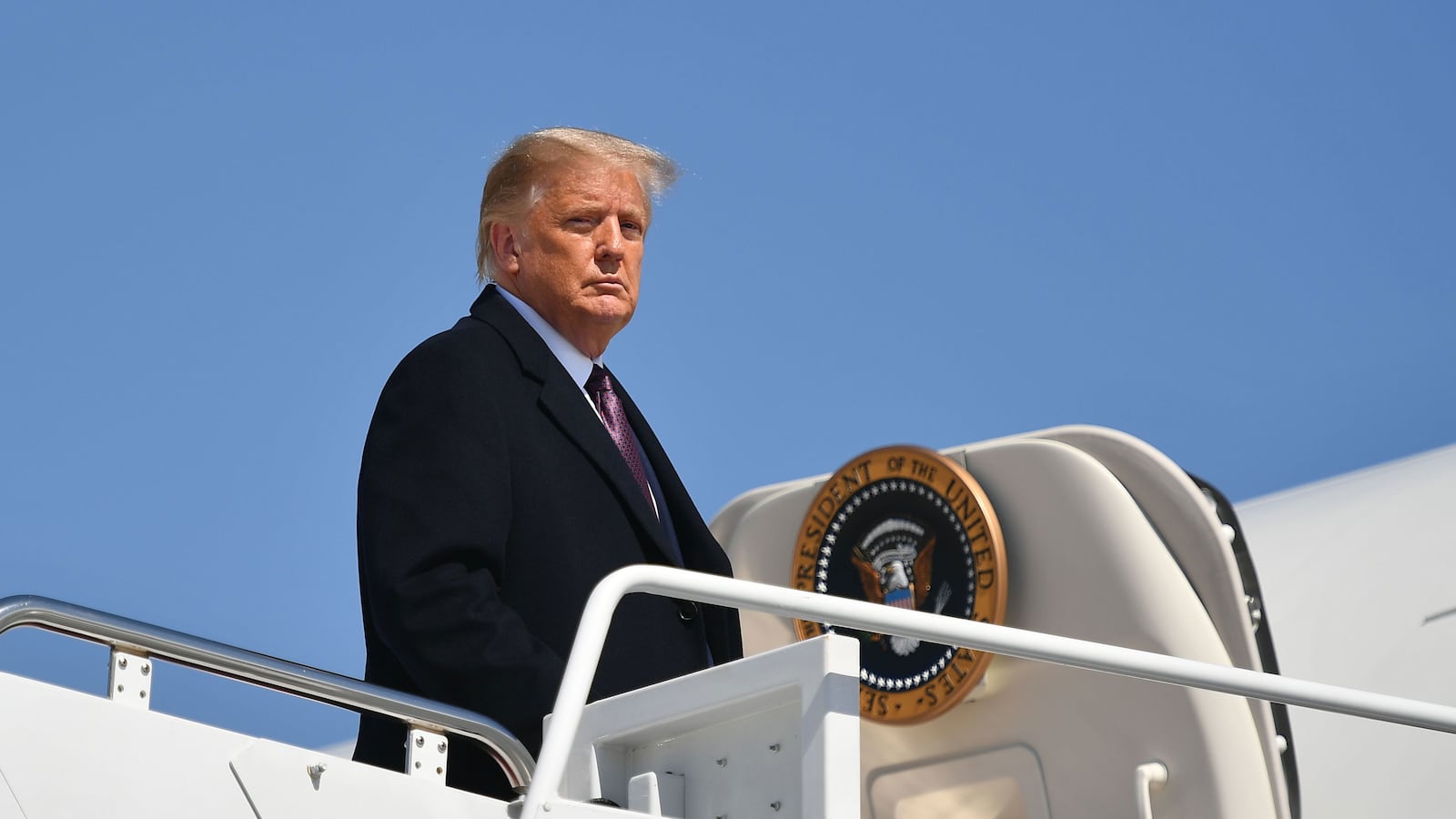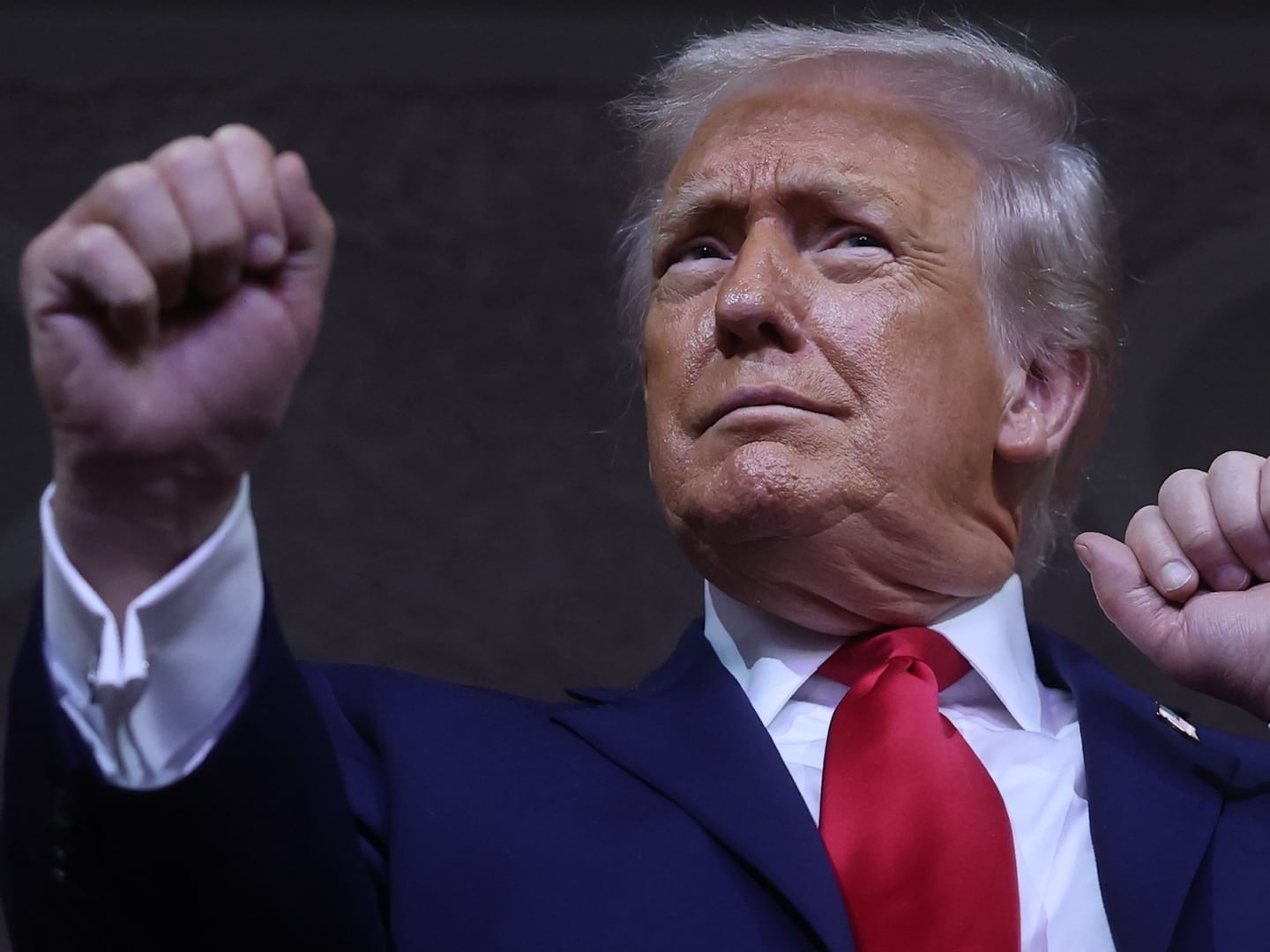When Donald Trump tested positive for COVID-19, it was not simply a seismic political event, or a fresh breed of “October Surprise.” The president’s positive test result also speaks volumes about the threat we face and the consequences of turning our backs on science and public health in America. The president of the United States and White House staff are, at least so far as we can tell, very often tested—or at least given the option to get tested—for the virus, and surrounded by the nation’s best scientists and physicians.
It wasn’t enough.
Even if we might be less likely to walk around without a mask—or pack an arena for a crowded rally—most of us don’t have nearly the level of safeguards against COVID-19 that the president does. We have to go out of our way to get tested, and the results often take many days to arrive. And many of us don’t have readily accessible, affordable, or quality medical care. Tens of millions of Americans have no health insurance at all.
Meanwhile, ordinary working people are constantly at risk of exposure to COVID-19: Front-line workers go to high-risk work settings every day to keep the country running—hospitals and other healthcare settings, supermarkets, sanitation, law enforcement, and meat-packing plants, just to name a few. Our everyday lives are fraught with risks, like going to school or work, childcare, and even grocery shopping.
Given these risks, it isn’t surprising that over seven million Americans have been infected, with over 200,000 deaths—with those figures representing just reported cases and deaths, the tip of the iceberg. If the president can contract the virus, we are all at risk. If infection can spread in the highly protected environment of the White House, it can spread anywhere.
The president has been actively downplaying the threat of COVID-19 since January, while contradicting his top scientists and sidelining public health agencies. It’s well known that the president has cast doubt on the seriousness of the pandemic, saying it would “disappear” and was no worse than seasonal flu. He downplayed the pandemic deliberately, as he told Bob Woodward. He has mocked those who followed public health experts’ advice like wearing masks, including criticizing his political opponent Joe Biden and journalists. He hasn’t modeled recommended health practices himself, often refusing to socially distance and to wear a mask in public. His densely crowded indoor political rallies have posed the highest risk environments, entirely opposite to what public health professionals have urged.
The president has urged opening up society and the economy even in places where community transmission is raging. He has criticized mayors and governors for their COVID-19 restrictions, most of which have been well supported by scientific evidence. The president has publicly hyped unproven, sometimes dangerous, treatments like hydroxychloroquine or even disinfection by injecting oneself with bleach.
Most egregious, the president has criticized and sidelined dedicated career scientists and public health professionals. President Trump publicly criticized Dr. Anthony Fauci for repeated “mistakes” after the National Institutes of Health (NIH) scientist countered the president’s claim the virus would disappear. And he criticized Dr. Robert Redfield, Centers for Disease Control and Prevention (CDC) Director, for contradicting the White House timeline on a COVID-19 vaccine. The administration blocked CDC guidelines for reopening schools and businesses, labeling them “overly prescriptive.”
In my 30 years of working with agencies like the CDC, the National Institutes of Health, and the Food and Drug Administration (FDA), I have never seen career scientists as demoralized as they are now. Public trust in these agencies is at an all-time low. The consequences of political interference with science and public health couldn’t be clearer. Now that we are on the verge of a COVID-19 vaccine, there is deep concern over political pressure on the FDA to approve a vaccine before the election. Public trust in the vaccine’s safety and effectiveness is crucial to getting the high coverage and protection we need.
The health and safety of the president of the United States is one of the nation’s highest priorities. The president has a combination of high-risk factors, including older age, being overweight (perhaps obesity), and a history of cardiovascular disease. His physicians will closely monitor whether he becomes seriously sick. We all hope he will not require hospitalization or critical care, as occurred with United Kingdom Prime Minister Boris Johnson.
The announcement that President Trump contracted COVID-19 should be of profound concern to all Americans. It plunges our country into a period of uncertainty and insecurity. But it also reminds us of the vast challenges we face as a nation in confronting a virus that is so easily spread and causes so much suffering and death. Most importantly, it reminds us that science is our only tool to curb the pandemic. The president’s diagnosis should be a wake-up call to invest in, and support, science and public health. Governors should think twice about opening up their states for business too quickly and against public health advice.
If the president’s diagnosis convinced the public to take the virus seriously—to wear masks and practice social distancing—we could save tens of thousands of lives as the country embarks on the next phase of America’s pandemic response.







